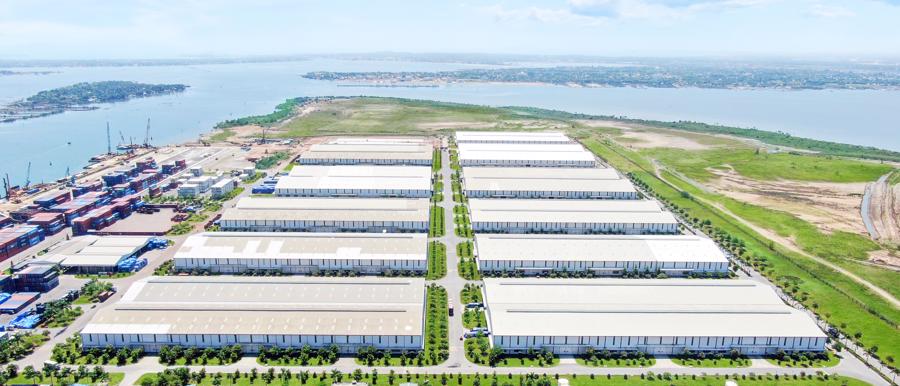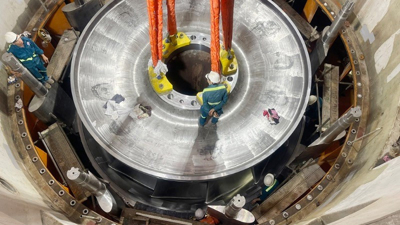Chu Lai Port plays key role in logistics in Central Vietnam
Chu Lai Port in Quang Nam province has affirmed its role as a major port in the central region and central highlands, emerging as a key player on the maritime map and a vital supply chain hub in central Vietnam.

Located in a strategic position and seamlessly connected with major road links in central Quang Nam province and elsewhere in the central region, Chu Lai Port possesses many advantages in inter-regional and regional connectivity. The site sits on a 2-km stretch with access to major roads such as National Highway No. 1, the Da Nang - Quang Ngai Expressway, the coastal road linking Da Nang, Hoi An, and Chu Lai Airport, and the Ho Chi Minh Highway. National Highways No. 14E, 14B, 14D, and others also provide additional north-south access. These routes experience high traffic flows, serving freight transportation from the southern provinces of Laos to Vietnam via the Bo Y border gate in the central highlands’ Kon Tum province and the Nam Giang border gate in Quang Nam. Chu Lai Port serves as a vital gateway for regional and international trading connectivity along Vietnam’s coastal routes and the East-West Economic Corridor.
Under Quang Nam’s development plan for the 2021-2030 period with a vision to 2050, the province focuses on developing sectors such as aviation, seaports, and logistics services. In line with its maritime development strategy, including investing in the new Cua Lo route, which links the port to a non-tariff zone, industrial parks, airports, and railway stations, and the forming of a multimodal logistics center, Chu Lai Port is positioned to become a leading seaport - logistics hub for central Vietnam and the central highlands.

Central Vietnam is also considered a hub for manufacturing and export industries such as textiles, footwear, wood and furniture, metals, and other key sectors like agricultural product processing, heavy industry, oil and gas, and energy, with many large industrial parks and economic zones such as THACO Chu Lai, Bac Chu Lai, and Tam Thang in Quang Nam, and VSIP and Dung Quat in Quang Ngai province, among others. Given these advantages, Chu Lai Port has many opportunities to enhance its role as a key logistics center, connecting the region’s trade with the world.
Enhancing its spearhead role in logistics chains
Currently, goods from Vietnam’s central highlands and southern Laos passing through the Nam Giang (Quang Nam) and Bo Y (Kon Tum) border gates and from northeastern Cambodia via the Le Thanh border gate (Gia Lai) are transported by road to Chu Lai Port. These goods then connect to a vast network of sea routes reaching Northeast Asia, Europe, and the Americas, and vice-versa. Chu Lai Port thus acts as a multimodal logistics hub integrating road transport, seaport operations, and sea transport. This creates fundamental and smooth connections that facilitate the business production process, optimizing profits and boosting competitive advantages.
Recently, the THILOGI Group, the owner of Chu Lai Port, successfully gained approval to join the US Federal Maritime Commission (FMC) and operate as an intermediary carrier for the Vietnam - US trade route. This will allow THILOGI to offer direct contracts with shipping lines, expanding the port’s reach to the American market and strengthening trade opportunities for businesses in central Vietnam and neighboring regions. “With the Chu Lai - America trade route, which leverages domestic and international transshipment ports, Chu Lai Port has facilitated convenient, fast, and cost-effective access of our goods to the US market, while also boosting the flow of goods to the European and American markets for FDI enterprises,” one FDI exporter via Chu Lai Port said.

“The port is expanding services and partnering with international shipping lines to diversify maritime routes to Northeast Asia, the US, and Canada,” affirmed Mr. Phan Van Ky, the President of Chu Lai Port. “This will directly benefit exports from the central highlands, southern Laos, and northeastern Cambodia. We are also leveraging our extensive land to expand the warehouse system to meet the growing demand for storage of various commodities, especially agricultural, forestry, and mineral products such as cassava starch, coffee, rubber, and ores.”
In the first half of 2024, Chu Lai Port invested over VND400 billion ($15.7 million) in equipment, vehicles, and infrastructure upgrades, including cutting-edge, high-capacity crane systems (STS gantry cranes and RTG cranes), specialized trailers for cargo transport, expanded warehouse and yard space, as well as an automated vehicle washing system and weigh station.
By the end of July, Chu Lai Port expects to complete and put into operation a new wharf for 50,000 DWT vessels. This expansion, together with its focus on modern technology, positions Chu Lai Port as an environmentally-friendly and smart port with sustainable development goals.







